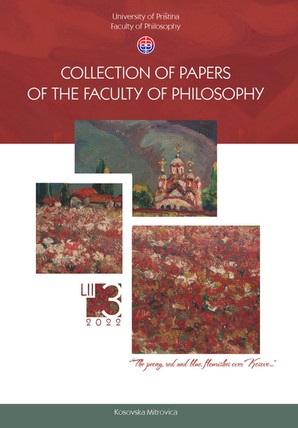Lexical Blends in Serbian: An Analysis of Morphosemantic Transparency
Lexical Blends in Serbian: An Analysis of Morphosemantic Transparency
Author(s): Gorica R. TomićSubject(s): Morphology, Lexis, Semantics, South Slavic Languages
Published by: Филозофски факултет, Универзитет у Приштини
Keywords: lexical blends; extra-grammatical morphology; morphosemantic transparency; Serbian.
Summary/Abstract: The present paper investigates the two data sets of Serbian lexical blends by applying a typology of the four blending techniques (i.e. complete blending, contour blending, semi-complete blending, and fragment blending) scaled according to the relative morphosemantic transparency of the resulting blends, as proposed by Ronneberger-Sibold (2006, pp. 168–169) for German blends, with the aim of determining whether the users of contemporary Serbian are able to consciously and deliberately use the different degrees of morphosemantic transparency of blends for achieving various communicative purposes, namely humorous-satirical purposes and purposes of brand naming. Additionally, the paper aims to compare and contrast these results with the results obtained by Ronneberger-Sibold (2006) for 612 German satirical blends and brand names, thereby examining differences and similarities between the two typologically different languages. The data collection for the qualitative and quantitative analyses consists of 202 humorous-satirical blends and 102 brand names created by humorists, satirists, journalists, branding or marketing agencies, manufacturers, etc. The examples of blends are partly taken from a number of existing studies into Serbian blends and partly collected from a wide variety of sources including literary works, (political) satirical shows, journalistic media, official websites of companies and other manufacturers, etc., as well as by field research methods. The results of the analyses show that the creators of the Serbian humorous-satirical blends and brand names are actually well aware of the varying degrees of morphosemantic transparency of blends produced by the four blending techniques and are perfectly able to utilize these techniques for fulfilling various communicative functions. In addition, it has been shown that the users of the Serbian blends tend to prefer the same blending techniques as the users of the German blends (Ronneberger-Sibold, 2006, p. 175) for the creation of humorous-satirical blends and brand names, respectively, though not in the same proportions.
Journal: Зборник радова Филозофског факултета у Приштини
- Issue Year: 52/2022
- Issue No: 3
- Page Range: 13-37
- Page Count: 25
- Language: English

